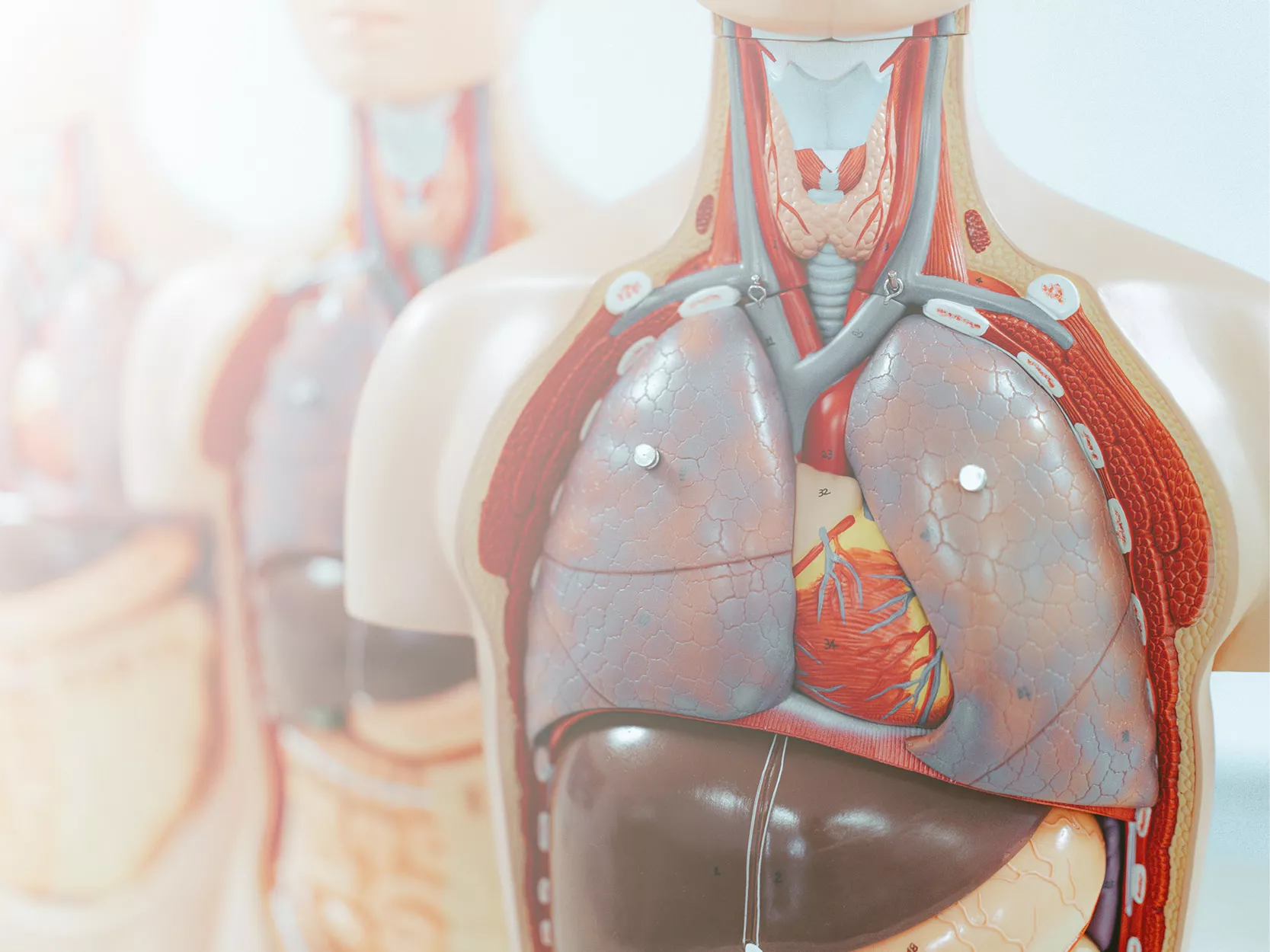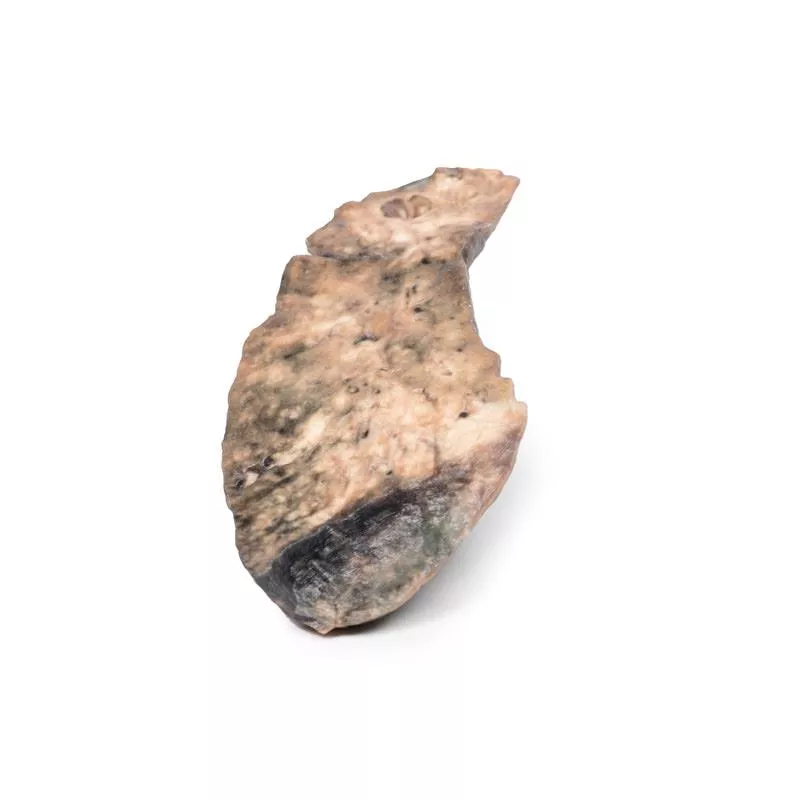Product information "Lung - Staphylococcus aureus Abscesses"
Clinical History
A 55-year-old woman presented with severe dyspnoea, productive cough and oral candidiasis. She was immunosuppressed due to steroid and cyclophosphamide treatment for rheumatoid arthritis. Her sputum grew Staphylococcus aureus. Despite starting appropriate therapy, she died shortly after admission.
Pathology
The bisected right lung shows multiple abscess cavities, the largest measuring 4 × 3 cm in the lower lobe apex. Another cavity (3 × 2 cm) is seen in the upper lobe, surrounded by consolidation. Additional small abscesses and patchy middle lobe consolidation are present. Many bronchi are filled with pus. Cultures confirmed Staph. aureus infection.
Further Information
Staphylococcus aureus is a gram-positive coccus commonly found on the skin and in the upper airways. Though usually harmless, it can cause opportunistic infections, including pneumonia and endocarditis. Hospital-acquired pneumonia, particularly post-intubation, and secondary bacterial pneumonia after viral infections (e.g. influenza) are common.
MRSA (Methicillin-Resistant Staph. aureus) is increasingly found in hospitals. IV drug users are at high risk of metastatic infections like Staph pneumonia or endocarditis. Staph pneumonia is often severe and associated with cavitating abscesses and empyema.
It should be suspected in high-risk groups or in patients with rapidly worsening pneumonia, haemoptysis, early multilobar involvement, cavitation, or coagulopathy. First-line treatment is usually flucloxacillin, though resistance is common. MRSA is treated with vancomycin or linezolid.
A 55-year-old woman presented with severe dyspnoea, productive cough and oral candidiasis. She was immunosuppressed due to steroid and cyclophosphamide treatment for rheumatoid arthritis. Her sputum grew Staphylococcus aureus. Despite starting appropriate therapy, she died shortly after admission.
Pathology
The bisected right lung shows multiple abscess cavities, the largest measuring 4 × 3 cm in the lower lobe apex. Another cavity (3 × 2 cm) is seen in the upper lobe, surrounded by consolidation. Additional small abscesses and patchy middle lobe consolidation are present. Many bronchi are filled with pus. Cultures confirmed Staph. aureus infection.
Further Information
Staphylococcus aureus is a gram-positive coccus commonly found on the skin and in the upper airways. Though usually harmless, it can cause opportunistic infections, including pneumonia and endocarditis. Hospital-acquired pneumonia, particularly post-intubation, and secondary bacterial pneumonia after viral infections (e.g. influenza) are common.
MRSA (Methicillin-Resistant Staph. aureus) is increasingly found in hospitals. IV drug users are at high risk of metastatic infections like Staph pneumonia or endocarditis. Staph pneumonia is often severe and associated with cavitating abscesses and empyema.
It should be suspected in high-risk groups or in patients with rapidly worsening pneumonia, haemoptysis, early multilobar involvement, cavitation, or coagulopathy. First-line treatment is usually flucloxacillin, though resistance is common. MRSA is treated with vancomycin or linezolid.
Erler-Zimmer
Erler-Zimmer GmbH & Co.KG
Hauptstrasse 27
77886 Lauf
Germany
info@erler-zimmer.de
Achtung! Medizinisches Ausbildungsmaterial, kein Spielzeug. Nicht geeignet für Personen unter 14 Jahren.
Attention! Medical training material, not a toy. Not suitable for persons under 14 years of age.



































